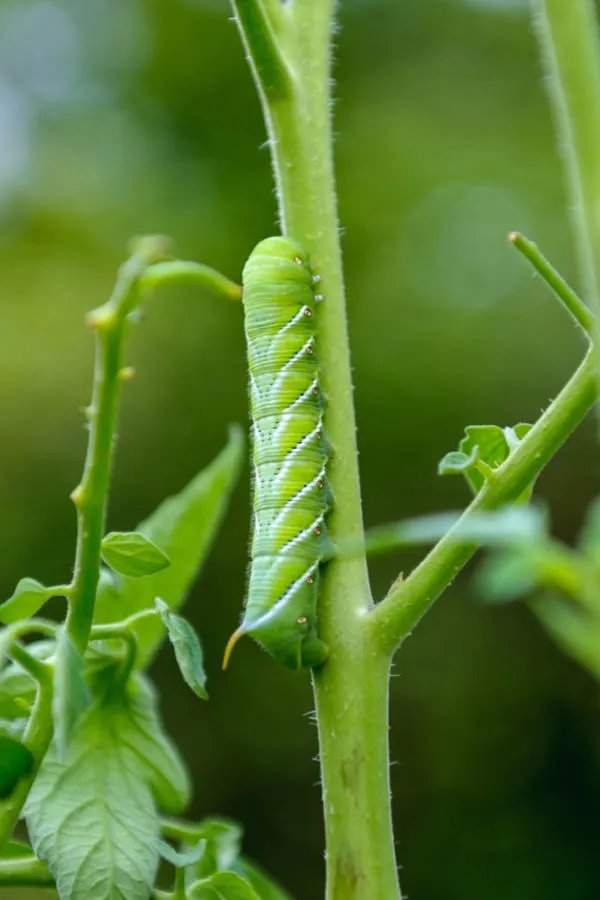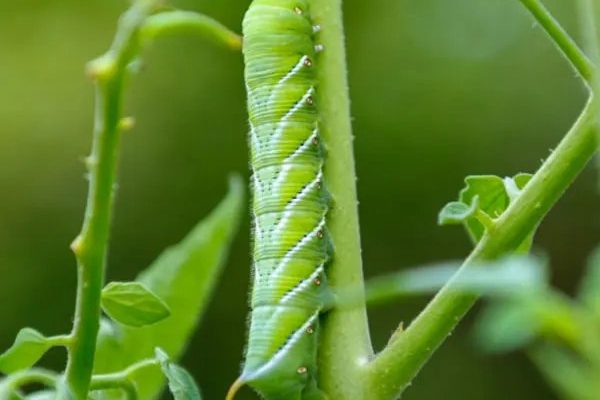
In this article, we’ll explore the relationship between hornworms and companion planting in a way that’s easy to grasp, even if you’re just starting out. Think of companion planting as a kind of buddy system for plants. Just as friends can help each other out, the right plant pairings can deter pests, promote growth, and create a flourishing garden environment. So, whether you’re looking to protect your tomatoes from hornworms or simply want to boost your garden’s health, you’re in the right place.
Understanding Hornworms: The Garden Menaces
Hornworms are the larvae of moths, usually the tomato hornworm or the tobacco hornworm. These little guys can grow up to 4 inches long and are famous for their green color, which helps them blend into your plants. They’re typically found on tomatoes, peppers, and eggplants, and if left unchecked, they can strip a plant of its leaves in no time. Honestly, it’s a gardener’s nightmare!
Now, you might be wondering why these pests are such a big deal. Well, aside from their voracious appetites, hornworms can also attract other pests. When they munch away, they can create openings in the plant, making it easier for diseases to sneak in. It’s like leaving the door open for unwanted guests.
So, what can you do about these unwelcome diners? Enter companion planting, which is a natural way to repel hornworms and protect your crops. By strategically choosing which plants to grow together, you can create a garden environment that’s less appealing to these pests.
Companion Planting Basics
Companion planting is all about pairing plants that benefit each other. Some plants repel pests, while others can attract beneficial insects or enhance the growth of their neighbors. Think of it like a well-coordinated dance. When plants are paired correctly, they can create a more balanced garden ecosystem.
For instance, *basil* is a fantastic companion for tomatoes. Not only does it help enhance the flavor of the tomatoes, but its scent can also deter hornworms and other pests. You might even say it’s like having a bodyguard plant.
Additionally, planting flowers like *marigolds* can help attract pollinators while repelling nematodes and aphids. It’s all about creating a supportive environment. The more diverse your garden is, the healthier it can be, which makes it less attractive to hornworms.
Top Companion Plant Recommendations
Now that you understand the fundamentals of companion planting, let’s get into some specific plant pairings that can help keep hornworms at bay:
- Tomatoes and Basil: As mentioned earlier, basil not only enhances the taste of tomatoes but also makes them less appealing to hornworms.
- Eggplants and Peppers: These plants can help each other thrive and fend off pests when planted close together.
- Marigolds: These vibrant flowers are great at deterring pests and can be planted among your vegetables.
- Garlic: This strong-scented herb can repel various pests, including hornworms, making it an excellent border plant.
By mixing these plants into your garden, you’re creating a natural deterrent system. It’s like having a little army protecting your crop, and you won’t have to turn to harsh chemicals or pesticides.
How to Implement Companion Planting in Your Garden
Alright, so you’ve got the basics down, and you know which plants work well together. Now, how do you actually implement companion planting in your garden? It’s easier than you might think!
1. **Plan Your Layout**: Sketch out your garden space on paper. Mark where you plan to place tomatoes, basil, marigolds, and other plants. Consider sunlight and space requirements for each.
2. **Start with Seeds or Seedlings**: You can either grow plants from seeds or buy young plants from a nursery. If you’re planting seeds, check the recommended spacing on the seed packets.
3. **Monitor Your Garden**: Once everything is in the ground, keep an eye on your plants. If you notice any hornworms or other pests, you can remove them by hand. And always watch for plants that seem to thrive or struggle together, adjusting your plant combos as needed.
4. **Rotate Crops Each Season**: To prevent pests from establishing themselves, rotate your crops each year. This way, the hornworms won’t know what hit ’em!
By following these simple steps, you’ll be well on your way to a thriving garden ecosystem.
Why Companion Planting Matters
You might be asking, “What’s the big deal with companion planting, anyway?” Well, aside from deterring hornworms, it promotes healthy growth and biodiversity. When you grow various plants together, it helps recreate the balance found in nature.
Moreover, companion planting can reduce the need for chemical pesticides. This is not only better for the environment but also for your health. It’s like bringing a little piece of nature into your garden without the need for synthetic treatments.
Plus, think about it this way: growing a diverse range of plants can lead to a more abundant harvest. Different plants can support each other’s growth, resulting in higher yields. It’s a win-win situation!
When to Expect Results
If you’re already excited about trying companion planting, you may be wondering how long it takes to see results. The truth is, it depends on various factors, including the plants you’re working with and local growing conditions.
Typically, you’ll start to notice healthier plants and a reduction in pest activity within a few weeks. For example, if you plant basil alongside your tomatoes, you might see fewer hornworms munching on your plants after a couple of weeks. However, the full benefits of companion planting might take a growing season to really shine.
Patience will be key here, much like gardening itself. It’s about nurturing your plants and allowing time for the ecosystem to establish itself.
Common Challenges in Companion Planting
Even though companion planting sounds fantastic, you may run into a few challenges along the way. One common issue is space. Some plants can grow quite large and overshadow their companions, limiting their growth.
Other problems could stem from differing water or sunlight needs. For instance, if you pair a water-loving plant with a drought-tolerant one, you may end up with one plant thriving while the other struggles.
Here’s the thing: it’s all about understanding the plants you’re working with. Take some time to research each plant’s needs and adjust your planting strategy accordingly.
And hey, don’t get discouraged! Each growing season is a learning experience. Keep tweaking your approach, and you’ll discover what works best for your garden.
By now, you should have a solid grasp of how hornworms and companion planting work together in your garden. Remember, companion planting isn’t just about keeping pests like hornworms at bay; it’s a holistic approach to gardening that enhances the health and productivity of your plants.
So, as you dig into your next gardening project, think strategically about your plant pairings. You’re not just growing a garden; you’re creating a thriving ecosystem that works in harmony. With a bit of planning and patience, you can enjoy a bountiful harvest while keeping those pesky hornworms where they belong—far away from your precious plants. Happy gardening!

